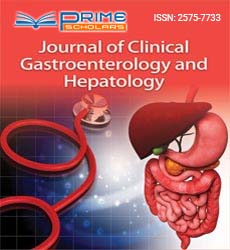Short Communication - (2023) Volume 7, Issue 4
Navigating Liver Cancer Insights into Types, Treatments, and Challenges
Yakov Krelin*
Department of Life Sciences, Ben-Gurion University of the Negev, Israel
*Correspondence:
Yakov Krelin,
Department of Life Sciences, Ben-Gurion University of the Negev,
Israel,
Email:
Received: 01-Aug-2023, Manuscript No. IPJCGH-23-17328;
Editor assigned: 03-Aug-2023, Pre QC No. IPJCGH-23-17328 (PQ);
Reviewed: 17-Aug-2023, QC No. IPJCGH-23-17328;
Revised: 22-Aug-2023, Manuscript No. IPJCGH-23-17328 (R);
Published:
29-Aug-2023, DOI: 10.36648/2575-7733.7.4.40
Introduction
One of the diseases in the United States that develops at the fastest rate is essential liver malignant growth, which is a serious condition. Bile duct and liver cancer account for the majority of primary liver cancers. Both sickness types have ordinary causes, risk components, secondary effects and prescriptions. The medical procedure known as halfway hepatectomy may be able to cure you if your disease is still in its early stages and the rest of your liver is healthy. This only applies to a small percentage of liver cancer patients. The outcome may be affected by a number of important factors, including the size of the tumour and whether or not nearby blood vessels are affected [1,2].
Description
The most well-known kinds of grown-up essential liver malignant growth are hepatocellular carcinoma and bile pipe disease cholangiocarcinoma. Adult primary liver cancers are primarily hepatocellular carcinomas. This kind of liver sickness is the third driving justification behind harmful development related passings all over the planet. The liver is home to cancer cells that can spread throughout the body. When cancer spreads, this is called metastasis. However, regardless of whether a cancer of the liver progresses to the bones, it is still referred to and treated as a liver disease rather than a cancer of the bones. Operation is the departure of the development and some enveloping strong tissue during an action. It is likely going to be the best infection facilitated treatment, particularly for patients with extraordinary liver capacity and developments that can be safely taken out from a confined piece of the liver. Patients with stage 4 liver cancer may experience worsening symptoms such as severe fatigue, pain, difficulty eating, and worsening jaundice. To help them work toward their own level of contentment, patients should talk to their support groups about how
to deal with these side effects. Either careful resection of the cancer using a medical procedure or a liver transfer is the best option for treating liver disease. You will have the most obvious opportunity with regards to endurance assuming all liver disease is taken out. Different therapies, similar to removal or radiation, can likewise be utilized to treat little liver disease. Disease that starts in the liver tissue is called essential liver malignant growth. Cholangiocarcinoma of the bile pipes and hepatocellular carcinoma are the two essential sorts of essential liver malignant growth. At the point when malignant growth spreads to the liver from different pieces of the body, this sort of disease is called optional metastatic liver malignant growth. Tragically, most of chemotherapy drugs significantly affect liver disease. On-going improvements have exhibited that utilizing a blend of prescriptions might be more powerful than utilizing only one chemo drug. However, responses typically do not last very long and even these drug combinations only shrink a small number of tumours. Tragically, therapy cannot treat progressed liver malignant growth [3,4].
Conclusion
Its goals are to manage your cancer, alleviate your symptoms, and enhance your quality of life. The overall five-year survival rate is 3%. It is 4.0% for females and 2.2% for males, respectively. The guess is noticeably worse without treatment. Stage 4 liver diseases has a median prognosis of less than four months. A person’s risk of developing liver cancer can be increased by a family history of disease risk factors, despite the fact that there is no strong genetic component. Heavy drinking and HBV and HCV infections are strong risk factors for liver disease.
Acknowledgement
None.
Conflict Of Interest
The authors declare that they have no conflict of interest.
References
- Rizvi S, Gores GJ (2013) Pathogenesis, diagnosis, and management of cholangiocarcinoma. Gastroenterology. 145(6):1215-29.
[Crossref] [Google Scholar] [PubMed]
- Sim HW, Knox J (2018) Hepatocellular carcinoma in the era of immunotherapy. Curr Probl Cancer. 42(1):40-48.
[Crossref] [Google Scholar] [PubMed]
- Ganesan P, Kulik LM (2023) Hepatocellular Carcinoma: New Developments. Clin Liver Dis. 27(1):85-102.
[Crossref] [Google Scholar] [PubMed]
- Hartke J, Johnson M, Ghabril M (2017) The diagnosis and treatment of hepatocellular carcinoma. Semin Diagn Pathol. 34(2):153-159.
[Crossref] [Google Scholar] [PubMed]
Citation: Krelin Y (2023) Navigating Liver Cancer Insights into Types, Treatments, and Challenges. J Clin Gastroenterol Hepatol. 7.35
Copyright: © 2023 Krelin Y. This is an open-access article distributed under the terms of the Creative Commons Attribution Li- cense, which permits unrestricted use, distribution, and reproduction in any medium, provided the original author and source are credited.

